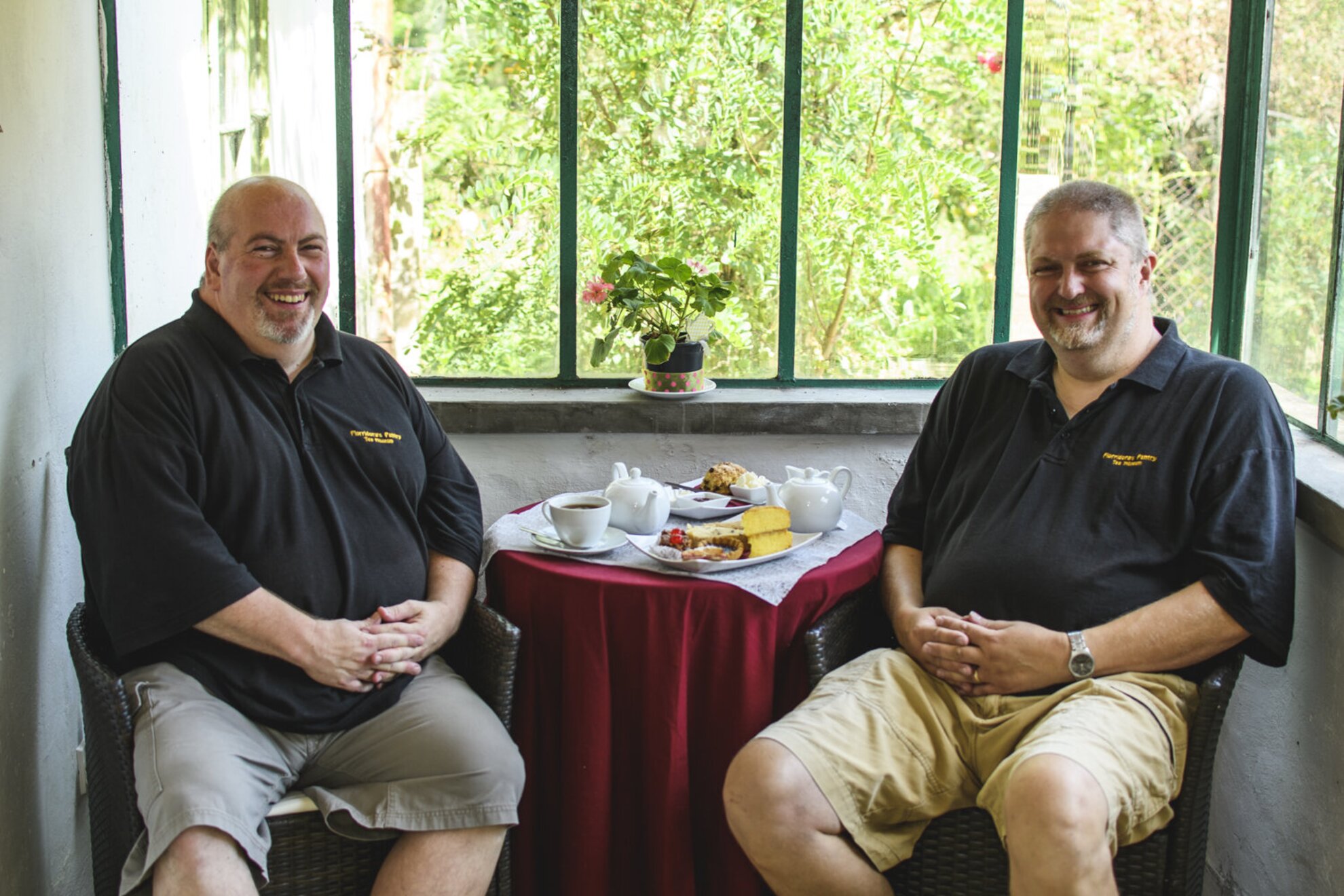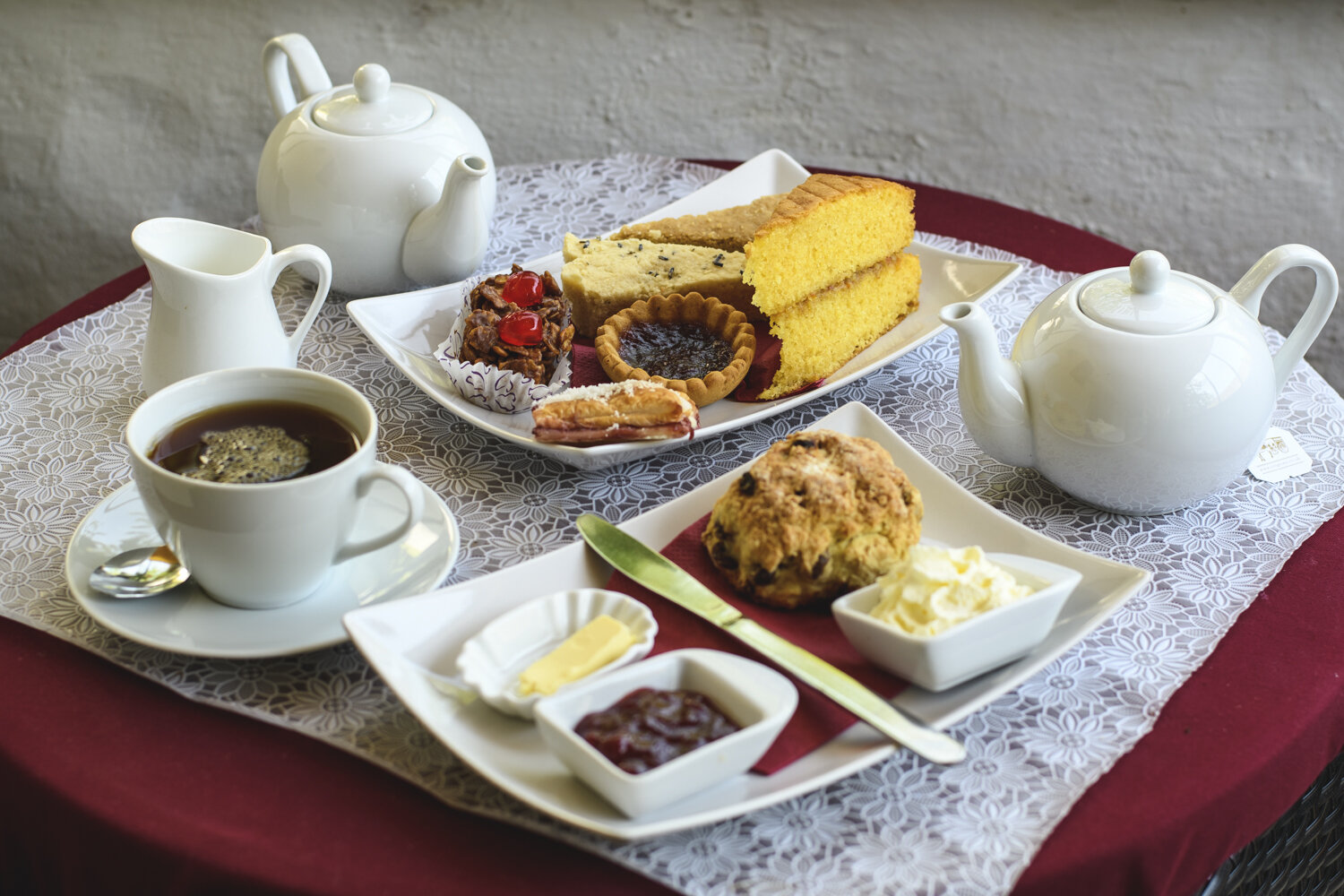If we had to guess, we would have said that if there is ever going to be a British tearoom in Hungary, it would be located in Budapest, and not in a small village in Zala County near Lake Balaton. But Englishmen are known for appreciating quirkiness, so it comes as no surprise that we can sip Earl Grey and have traditional English tea biscuits at a hundred-year-old peasant house where we aren’t greeted by an old, silver-haired lady but two guys, Neil and Ken.
“This one’s greengage and mint, this is greengage and ginger, this is new, too: cherry and rose petals,” says Ken Jones, one of the owners of Florridora’s Pantry while he shows us the freshly made jams. The small jars wear colorful textiles as “hats”, making them look like stout little grannies – almost everything here is about grandmothers.
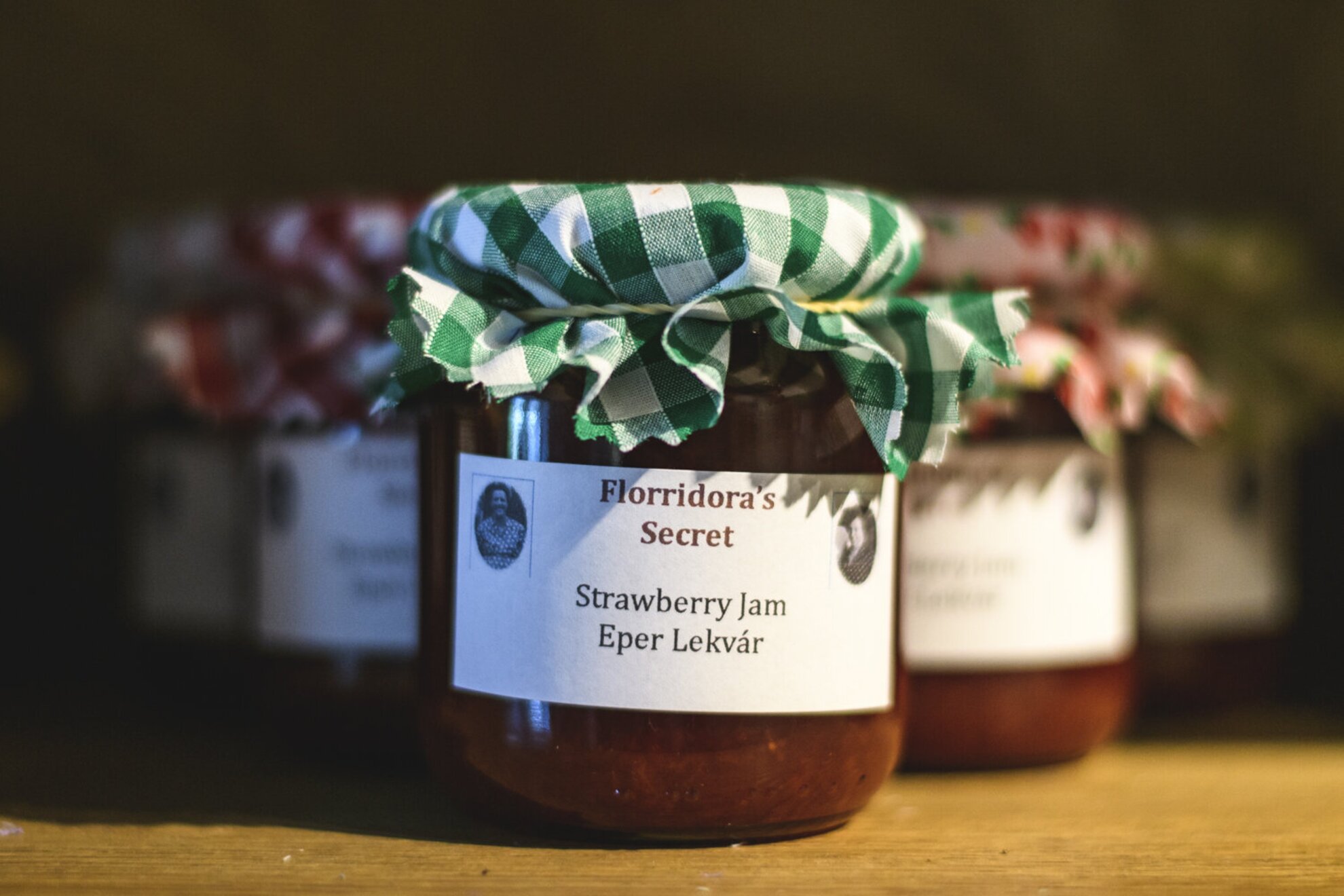
Welcome to Zalaszántó!
We’ve been to Zalaszántó at the beginning of summer, when we visited two couples who have organic farms here. What we didn’t know then is that Viola Nyári’s husband, Darren, and his father aren’t the only British people in the village: Ken Jones and Neil Stevens also live here, and they manage a cozy tearoom and tea museum at the end of the village. It’s as peaceful here as it is at the quiet, calm villages of Miss Marple novels (well, before the murders, anyway). It’s a whitewashed, old peasant house surrounded by a rustic idyll, with an amazing garden of herbs and trees, and a view of the Rezi Castle; there’re old-fashioned children’s toys in the garden, like loops, ropes, and hopscotch. Inside we arrive to a little piece of England: the tearoom of a small town in Great-Britain would look just the same. It’s easygoing, friendly, and traditional. There’re old English tea adverts and photographs on the wall, while famous cups hang from the beams.
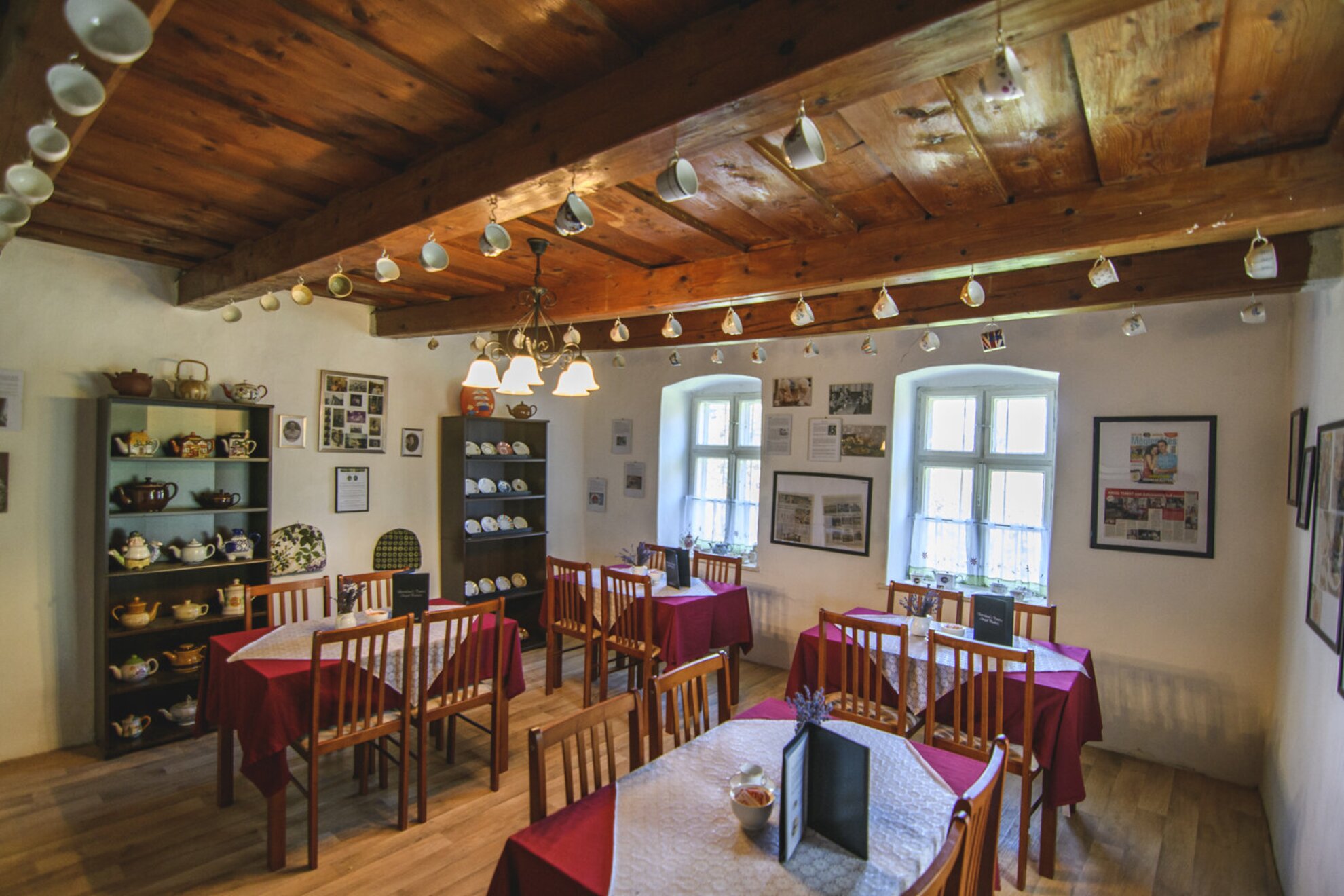
The English cakes (prices range from 250 HUF to 400 HUF per piece) are simple, but it’s not easy to make them right. They compliment the tea nicely – in the UK they barely have these by themselves – and they embody the English restraint: no extravagance or intrusion, just butter, sugar, and jam – these three have to work. Neil and Ken are happy to tell us about the cookies. They inherited the recipes from their grandmothers: Ken’s grandmother, Florri baked biscuits at Betty’s, a famous tearoom in Yorkshire. The name of Betty’s is known all around the world, it’s the textbook example of five o’clock tea, and they deliver biscuits even as far as Japan. Neil’s grandmother, Dora was the housekeeper of a large family.
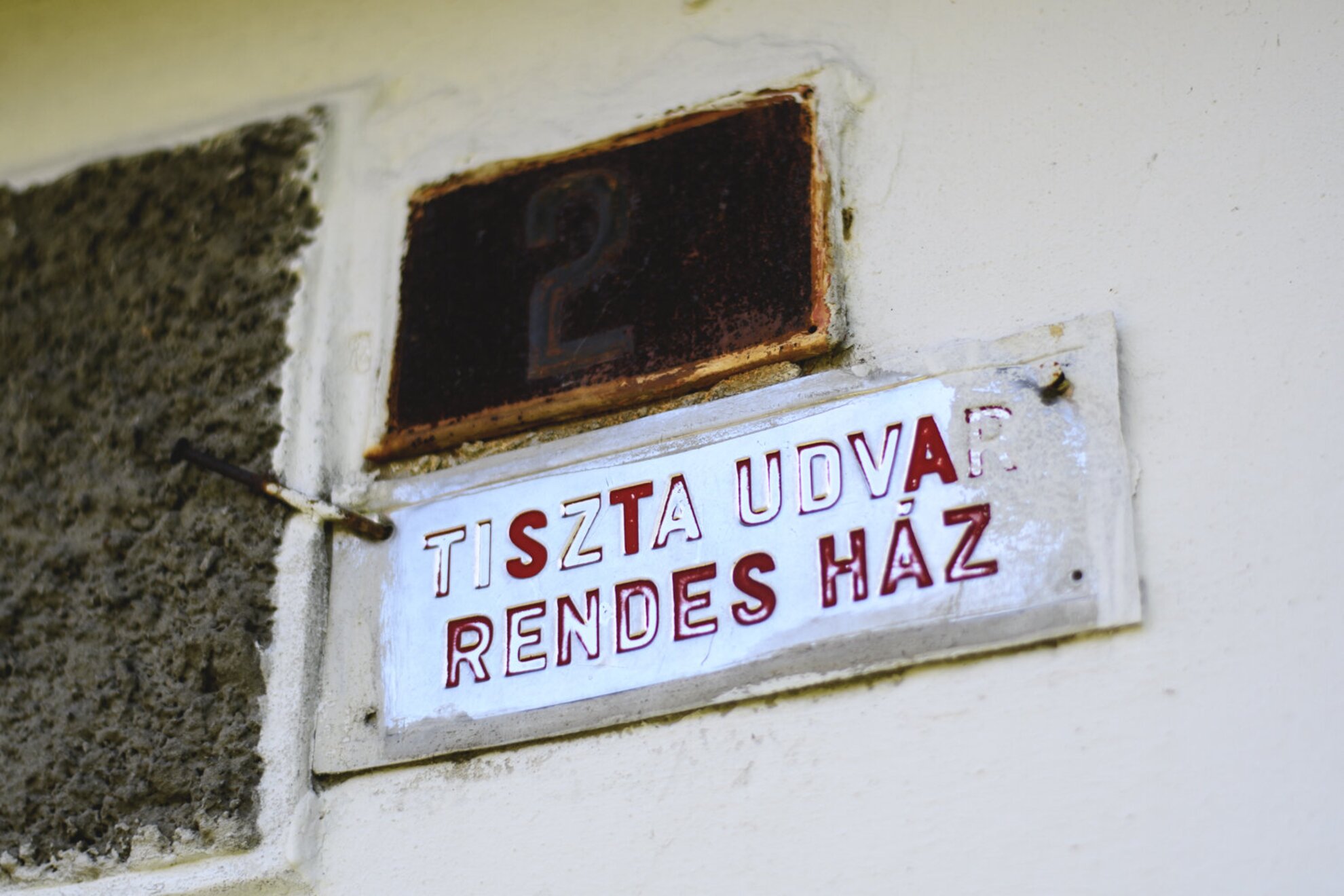
Victoria sponge cake
“Baking is in our blood,” laughs Ken. The lavender shortbread biscuit is his specialty – these were the favorite cookies of Mary, Queen of Scots. It’s one of their best selling items, just like the Victoria sponge cake, which is Neil’s specialty. The thick sponge filled with strawberry or raspberry jam was first baked for Queen Victoria who didn’t want her kids to get messy from the fruitcake and leave raisins everywhere.
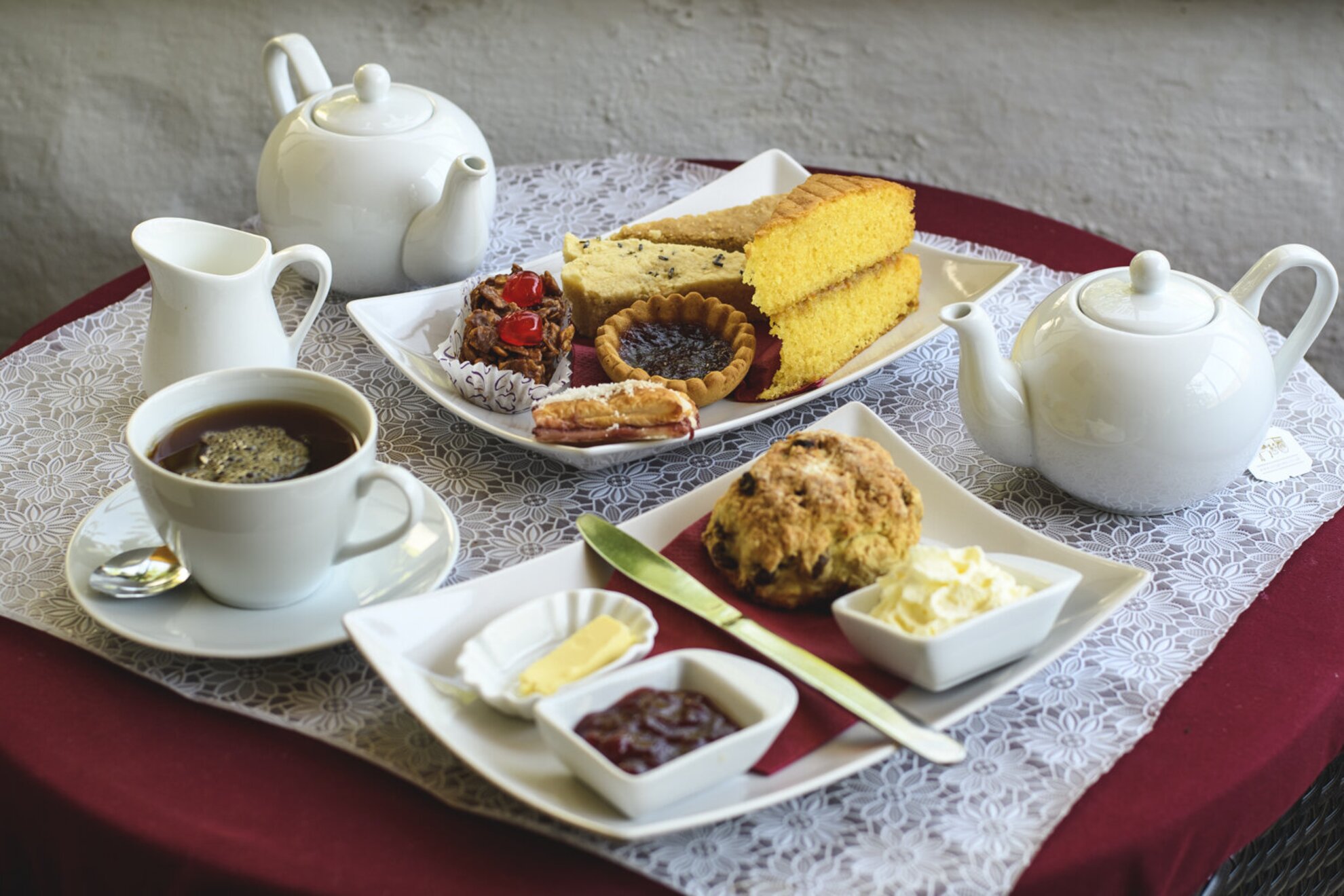
Every dessert has its own story – says the tearoom – and it’s true: they can tell a personal story and some cultural trivia about all of them. So we won’t tell where the cheese went from the London cheesecake, but we will let everyone know that the raspberry jam filled puff pastry is very delicious. They also have the Lake District’s famous ginger shortbread, the raisin filled fruitcake that is baked with black tea instead of fat, the jam tarts, and, of course, they have scones, the stars of English afternoon tea, that are best when served with thick cream and jam. They always change their selection so that the regulars won’t get bored, but the scones and the Victoria sponge are permanently on the menu.
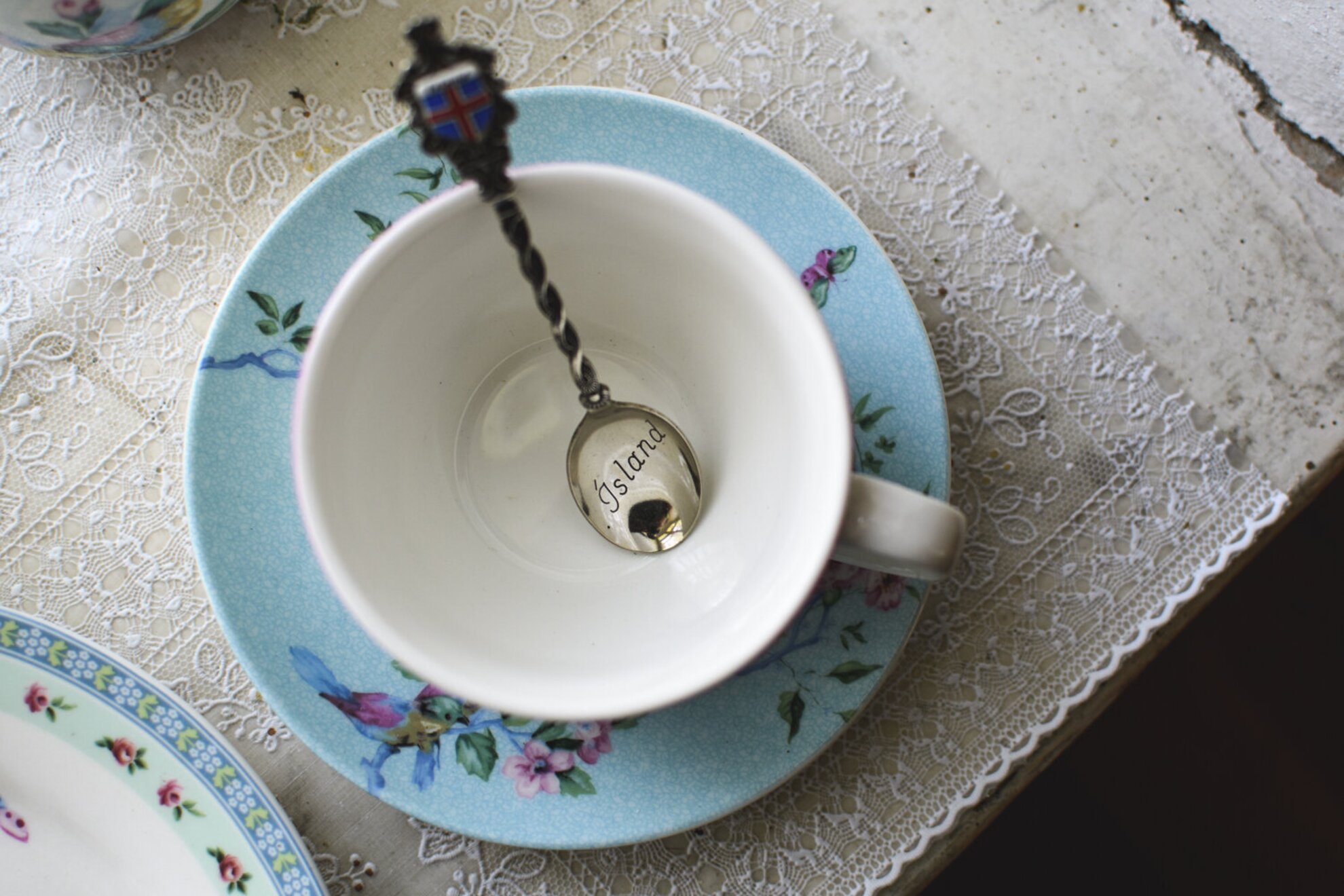
And of course they have seasonal desserts as well, like the Christmas pudding, or the Kossuth cake that they made for Hungary’s national holiday – it originates from Baltimore, USA. Maybe Neil is the only one who bakes a Kossuth cake in Hungary; it’s actually a sponge baked in the shape of a watermelon. They cut it in half, scoop out its middle, and then it’s filled up with sugary cream, and it’s served with chocolate sauce. We had to come to Zalaszántó to learn about this.
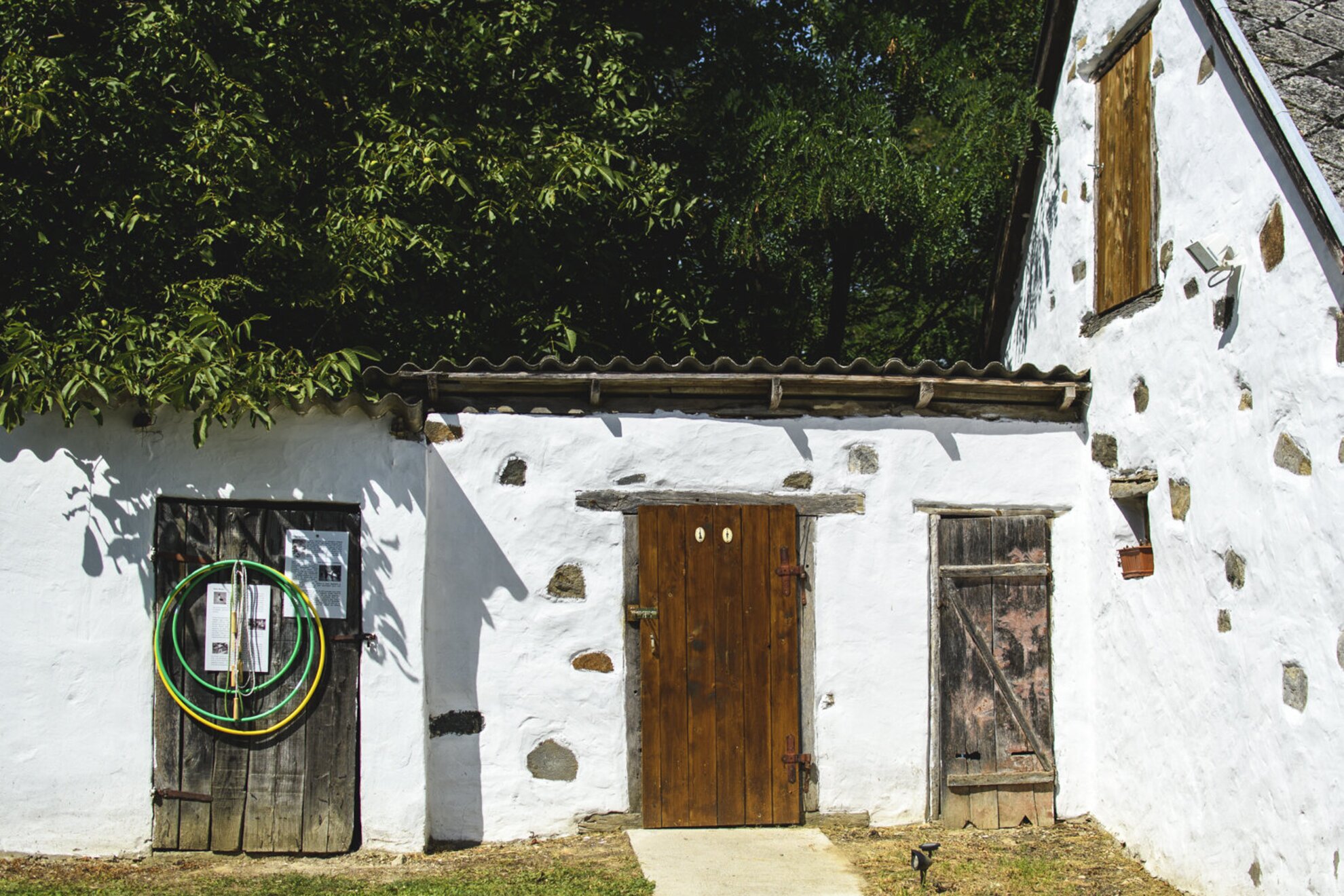
Thank you grannies, good night!
Neil and Ken left England behind ten years ago, because life there was “overcrowded, overworked, impersonal, and stressful, and the bureaucracy is horrible”. Neil, who’s originally a speech therapist taught English in Mosonmagyaróvár for four years, while Ken worked at a printing house. They came to Zalaszántó where they hoped to have a free, self-supporting life, and where they were accepted as a couple. They grow vegetables and fruits in their huge garden, while the hens and rabbits provide the meat. They make their own tea-mixes from the herbs: the lavender, mint, marjoram tea is made according to a recipe from the Shakespearean-era. They are proud of their jams as well: “you won’t get something like this elsewhere”. We can taste all of them here; the apricot and almond pairing is one of the most popular of these, but we believe that the thyme and cherry will also be a big success, just like the ginger and orange (they harvest the ginger for the latter in their garden).
